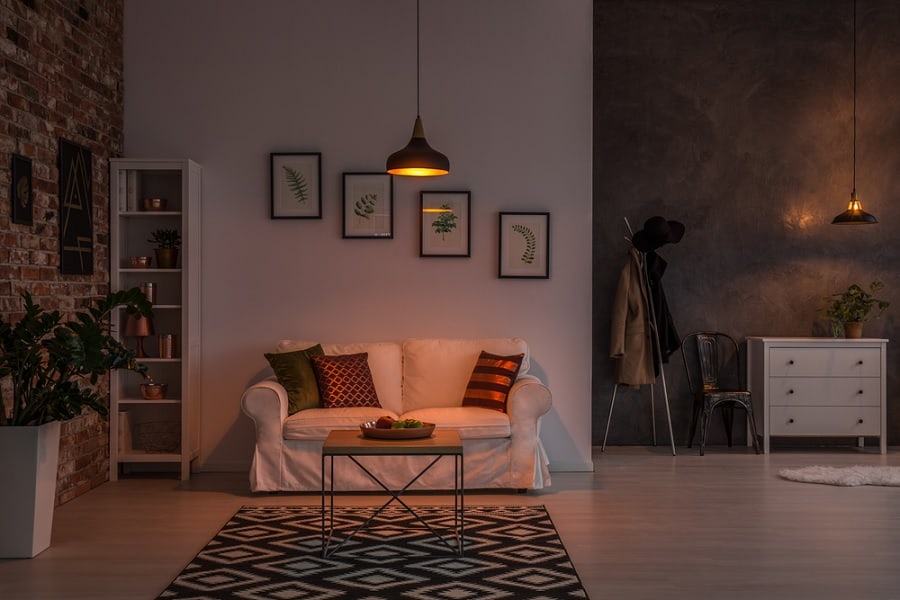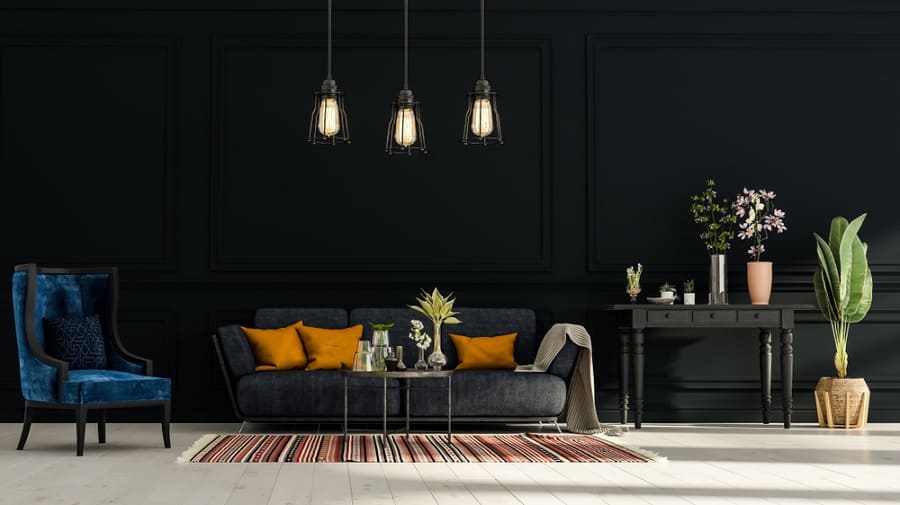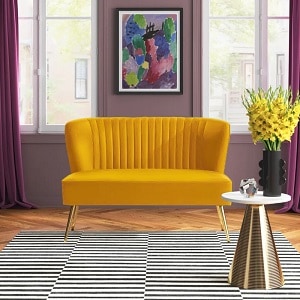
How to Brighten a Dark Room
Not every room has plenty of natural light. This can leave you with rooms that feel like a dark cave. However, if you know how to brighten a dark room, you can overcome the lack of windows and natural light.
With the right changes to the architecture, artificial lighting, furniture, and decor, you can make even the darkest of rooms feel bright and welcoming.
Give these ideas a try and bring more light to your home.
1. Make Architectural Changes
If you want to make major changes to a room, then look to architectural changes that you can permanently improve the amount of natural light. These are the most costly, but can have the biggest impact.
Take Down the Blinds
If you can, consider removing the blinds from the windows. This increases the amount of light that’s coming in through the windows. However, keep in mind that this can reduce your level of privacy and security, so be careful about which windows you do this with.
Use a Door With a Window
If your room has an exterior door, you can replace it with one that has a window. This gives you another place where natural light can come in beside the windows. For the maximum amount of light, you can use a full-length glass door.
Paint the Window Trim
If the trim around your window is any color other than white, then consider painting it. This will brighten up the window and create a reflective surface around the window. This will increase the amount of perceived light coming in the window.
Paint the Walls
Painting your walls a crisp white will reflect the most amount of light. However, it can also look harsh and cold. You can choose light colors like pastels and light greys. This is perfect for a small room or those with low light.
Paint the Ceiling Bright White
What is the color of your ceiling? Paint it bright white to help reflect light down into the room. Even if you think your ceiling is already white, if it has been a few years, it has probably yellowed and could use a refresh. A fresh coat of white paint can brighten the room.
Paint the Dark Wood
This piece of advice can be taboo, but there’s no denying that painting the dark wood in your home can instantly brighten the room. If you can’t bring yourself to paint over the beautiful wood in your home, then consider refinishing or replacing it. Lightwoods are brighter and can keep a room feeling light.
Clean Your Windows
This simple cleaning task can increase the amount of light coming in your window. It’s amazing how much more light can come in your windows when you clean the dirt and mildew off them. Use soapy water and a stiff-bristled brush to scrub the outside of the windows and rinse them clean. Then clean the inside of the windows with Windex.
Trim Your Trees
If you have large trees growing outside of your house, they could block valuable sunlight. Have your trees trimmed back, so they block less light coming into your home. This is also smart because it can reduce the risk of damage to your home by falling branches.
2. Making Changes to Your Lighting

Sometimes, there’s only so much natural light you can get into a room. If you struggle with a room with very little natural light, you’ll need to supplement it with artificial lighting. This could be adding a lamp to a dark corner or revamping the lighting in the entire room.
Install Recessed Lighting
If you don’t have room for floor lamps, consider installing recessed lighting. These pot lights get mounted into the ceiling so that they are flush. That way, they won’t block light or close the ceiling in. They are typically installed in multiples across the ceiling to provide a large wash of light over the entire room.
Add Lower Level Light
If the only light source in the room is overhead lighting, you need to add more artificial light. In addition to the overhead light, add a lower light source, like a floor or table lamp. Direct the light upward to reflect off the wall and brighten the walls, making the room feel brighter.
Embrace Minimalist Light Fixtures
You don’t want big statement fixtures taking the attention away from the artificial light. Stick with minimalist fixtures that are slim and streamlined to blend into the room. Flush-mounted lights are also good because they reduce the bulk and maximize the ambient light.
Change Your Lampshades
Adding table lamps isn’t enough. Replace the dark or thick shades with a lighter shade or one made of thinner material. There’s no point in adding artificial light if you are going to block it with a shade. Don’t eliminate the shade, though. A large white shade can give the illusion that the lamp produces more light than it really is.
Use Diffused Lighting
Focus on adding ambient light to the room. This generalized light creates a wash of light over the entire room. Avoid accent lighting that doesn’t create useful light; think LED strip lights under shelving or fairy lights. Task lighting is also not helpful because it is focused light directed at a workspace.
Use Brighter Lightbulbs
Choosing the right bulbs for your artificial light can maximize their effectiveness. Whether you choose incandescent bulbs or LED light bulbs, choose a bright white daylight light. Look for bulbs that produce light in a temperature range of 5,000-6,000 Kelvins. This is a crisp, bright light that’s invigorating.
Aim Your Lights
Don’t just randomly place floor lamps in the room. Think about where you want to direct the light. Aiming it at a wall or the ceiling helps brighten the wall and reflect the light back into the room. This visual effect makes the room feel brighter than if you directed the light into the middle of the room.
3. Make Your Furniture Work For You
Choosing the right furniture in the room can reduce the amount of light it blocks. The fabrics can also reflect light and help the room feel brighter. You could also reflect more light with shiny metal surfaces.
Choose Light Colored Furniture
Light-colored furniture reflects more light, so replace your dark-colored furniture with pieces that are white, light grey, or another pastel color. You can also go bold with brightly colored furniture, such as a sunny yellow. These light and bright colors help to reflect more light and make the space feel brighter.
Angle Your Furniture
Position the furniture in the room to allow the light to flow. Don’t place anything in front of the window that could block the light. Instead, try placing furniture on the opposite side of the room facing the window. Then the furniture can reflect the light into the space. This works especially well if the furniture is light-colored.
Choose to Use Slimline Furniture
Heavy furniture is solid and takes up a lot of visual space, which means it blocks and absorbs light. Replace it with slimline furniture like pieces on legs or a metal frame. This will reduce the visual space it takes up in the room and the amount of light it blocks.
Make Shiny Surfaces Work For You
Shiny surfaces reflect light. No, this doesn’t mean you need to have a mirror surface on everything in the room. A lacquered, polished, or metal surface will achieve the same effect. These are smooth, reflective surfaces that will bounce and direct the light to other areas in the room. If you are skilled, you can reflect the light from a window by bouncing it off a reflective coffee table to a mirror on the wall to somewhere else in the room.
4. Brighten the Room With Decor
If you don’t have the budget for the architectural changes, you’ve added all of the lamps that you can, and you have made the necessary furniture changes; your final step is to address the decor.
These are the decorative pieces in the room that complete the design aesthetic you are going for. These pieces can help brighten a dark room or work against your room brightening efforts.
Keep the decor to a minimum and strategically choose pieces that will reflect the light or make the room feel more energetic.
Hang a Mirror
Hang a large mirror in the room to reflect the light. Think about the direction the light comes into the room and where the darkest place in the room is. You can then use the mirror to reflect the light where you need it the most. The larger the mirror is, the more light you can reflect.
Lighten Up With a Rug
If you have a dark floor, you can lighten it up with a light-colored area rug like this white rug from SAFAVIEH. Choose a large area rug that can cover most of the dark floor. This helps to brighten the entire room from the ground up.
Make the Window the Focal Point
If there is a large window in the room, make it the room’s focal point. Arrange the furniture and decor in the room to draw attention to the window. By making the window the focal point, you make the room feel brighter by focusing on the brightest point in the room.
Choose the Right Accent Colors
Sure, an all-white color palette will make the room feel its brightest, but this isn’t your only option. When all-white isn’t functional for your tastes or lifestyle, choose lighter colors instead. You can achieve the same effect with pale greys and light-colored browns like beige. Avoid a color palette that’s full of dark colors.
Pretend You Have a Window
Just pretending you have a window can make a room feel brighter. If you have a small window, mount the curtains to extend higher and wider than the actual window. This creates the illusion that the window is bigger than it really is. It will trick the brain into thinking there is more light because the window is supposedly larger.
Use White Curtains
Having curtains on your windows gives them a finished look and completes your interior design. However, curtains can also block the natural sunlight you are trying to increase. Compromise with sheer curtains. The fabric should be very lightweight, almost like translucent shades. This creates a barely filtered effect that will create privacy while minimizing the amount of light that gets blocked.
Reduce the Decor
Reducing the amount of decor in the room can allow more light to flow throughout. There are fewer physical objects blocking and absorbing the light, helping the room to feel brighter. If you wish to display decor, try to have it on a bookshelf perpendicular to the window. This will minimize the light-blocking effects.
Choose Brightly Colored Decor
If you wish to display decor, avoid dark-colored pieces that will absorb the light. Instead, opt for brightly colored pieces. The bright pops of color will help the room feel more cheery and brighter.
Say Yes to Maximalism
So far, the vast majority of advice on this list is to go bright white and minimalist. However, you can also take another approach. Instead of turning a dark space bright with white walls, try a bright color like an orange, magenta, emerald green, or peacock teal sofa. Check out the Lisette 47” Velvet Armless Loveseat which comes in a range of vibrant colors.
Then add shiny metal accents and large-scale patterns. This idea is to fill the space with bright and bold colors. This brings energy and life to the room, making it feel brighter.

